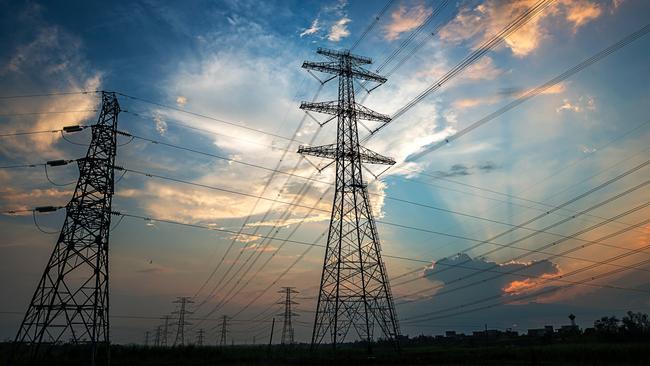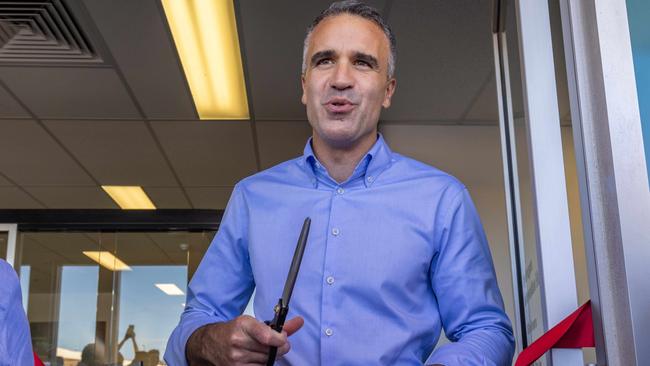Government seeks evidence to back hydrogen strategy years after unveiling hydrogen policy
The state government is looking to develop an evidence base to underpin “a renewable hydrogen strategy”, but says this strategy is different to its Hydrogen Jobs Plan.

Business
Don't miss out on the headlines from Business. Followed categories will be added to My News.
The State Government is looking to develop a “comprehensive evidence base” to develop a renewable hydrogen strategy for the state, more than three years after announcing its Whyalla-focussed Hydrogen Jobs Plan which will cost well over half a billion dollars.
A Procurement Activity Report was published by the State Government’s Department for Energy and Mining this week, entitled “South Australia’s Hydrogen Strategy 2025-2030”.
The description of the procurement involved is to “develop a comprehensive evidence base to inform the development of a renewable hydrogen strategy for South Australia, with specific focus on establishing Whyalla as a hydrogen and net zero manufacturing hub’’.
The planned market approach is timed for mid-February and is “almost certain’’ to proceed, the document says.
Then-opposition leader, now Premier, Peter Malinauskas, along with Energy Minister Tom Koutsantonis and Climate and Environment Minister Susan Close announced the Labor Party’s Hydrogen Jobs Plan in March 2021, promising “All elements of Labor’s Hydrogen Jobs Plan will be operational by the end of 2025, with the project cost estimated to be $590m’’.
The plan includes a 200MW hydrogen power station, 250MWe worth of hydrogen electrolysers which will be used to turn excess renewable energy into hydrogen, and a hydrogen storage facility.
While the document sourced by The Advertiser this week suggests that the government’s hydrogen strategy is not underpinned by an evidence-based approach to policy, the government denied this on Wednesday, saying the procurement is related specifically to hydrogen exports.

“The South Australian Government is delivering on its election commitment to establish a hydrogen industry through the Hydrogen Jobs Plan and to develop a comprehensive Hydrogen Export Strategy,’’ a government spokesman said.
“These initiatives are distinct but complementary. The Hydrogen Jobs Plan is designed to catalyse the establishment of a hydrogen industry in Whyalla, while the Strategy will outline the next steps to grow the sector further, building on the Hydrogen Jobs Plan’s foundational work.
“The procurement referenced relates specifically to the development of the Hydrogen Export Strategy, rather than the delivery of the Hydrogen Jobs Plan project itself.’’
The spokesman said the Hydrogen Jobs Plan remains on track with early civil works starting “imminently’’.
Opposition spokesman for Energy and Mining Stephen Patterson said the government's hydrogen plan seemed to be “an amorphous blob that changes as things go along’’.
“It’s clear that what was first promised, the costings were flawed,’’ he said.
Mr Patterson said it seemed fairly late in the process to be building an evidence base for a policy which was announced years ago.
“They really should be doing this work before they commit to substantial taxpayer capital outlay for their pet hydrogen plant,’’ he said.
News Corp Australia reported last month that natural gas will have to be trucked to the $593m hydrogen plant site at Whyalla for up to two years.
A tender released by the Office of Hydrogen Power SA showed the government needs what it calls a “virtual pipeline” to deliver gas to the Upper Spencer Gulf project site.
The tender said the natural gas or biomethane gas supply was needed for “commissioning, start-up gas, shutdown-gas, and back-up gas”.
The government wants an operator to design a “mother site” near a guaranteed supply of natural gas where trucks can be fuelled to make daily deliveries to the project site.
There also would need to be a “daughter site” designed and built where trucks can unload the gas near the hydrogen power station along with a storage facility that can store enough to “enable four hours running of 200MW turbines”.
“(Energy Minister) Tom Koutsantonis has tried to claim that gas will only be required to start the turbines. However, now it has been revealed that they will need to run on gas for up to four hours a day,” Mr Patterson said at the time.
“Labor wanted South Australians to believe that it would be fully powered by green hydrogen produced on-site.
“The trucking in of gas to run the turbines is required because of a lack of foresight in relation to gas pipelines, with the Whyalla gas pipeline already at capacity and unable to provide gas to Labor’s expensive hydrogen plant.”
The preferred project partners appointed in October last year, ATCO Australia and BOC Linde Consortium, found that the Whyalla gas pipeline could not meet the required natural gas needs.



